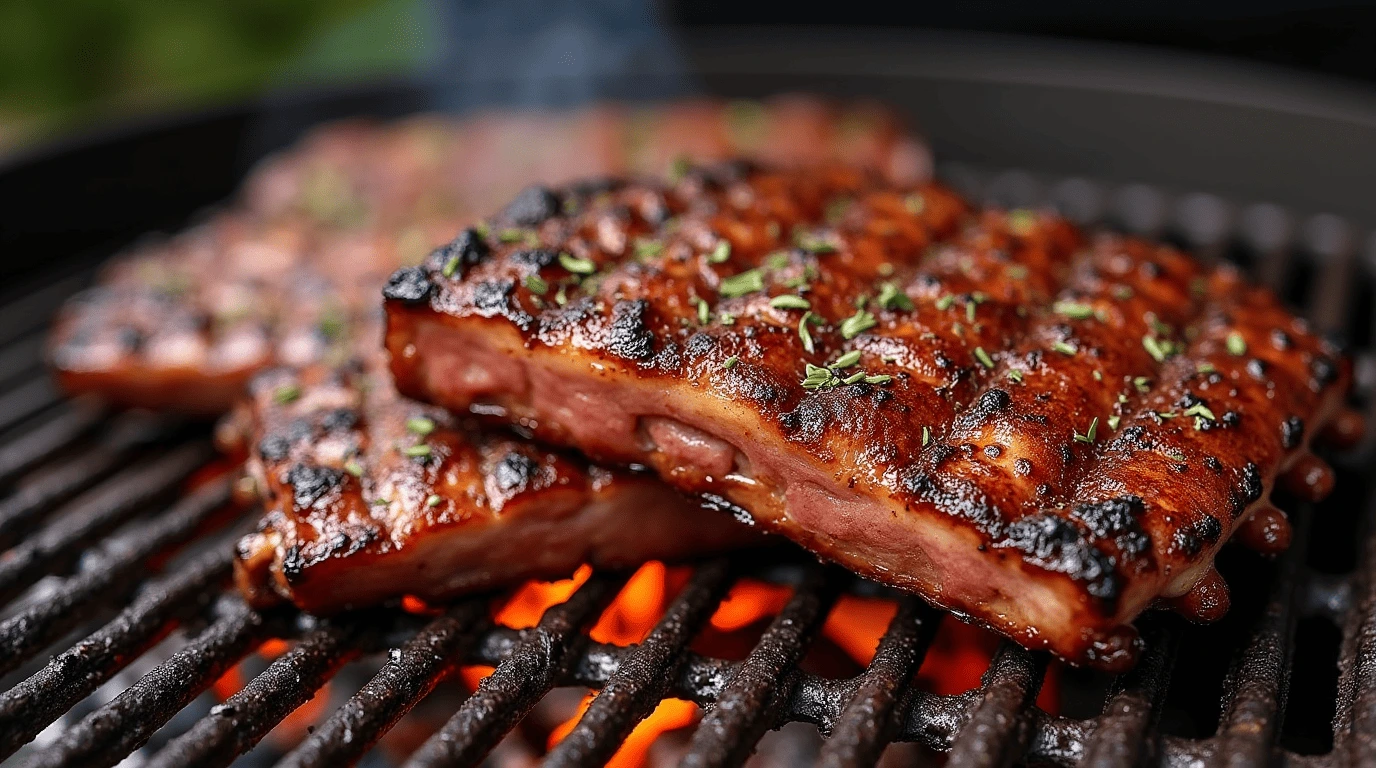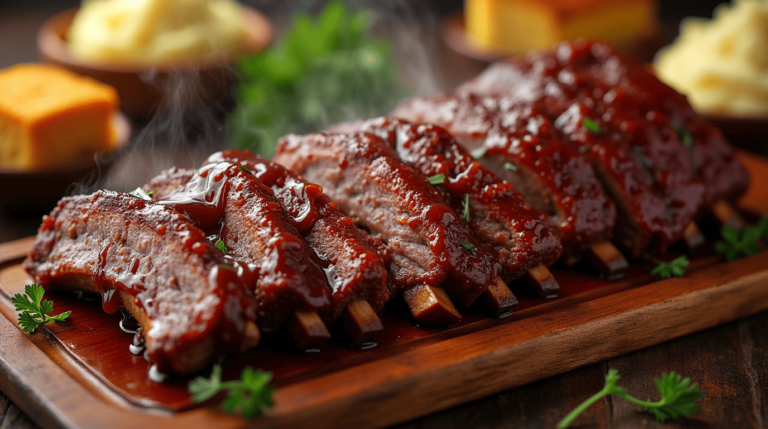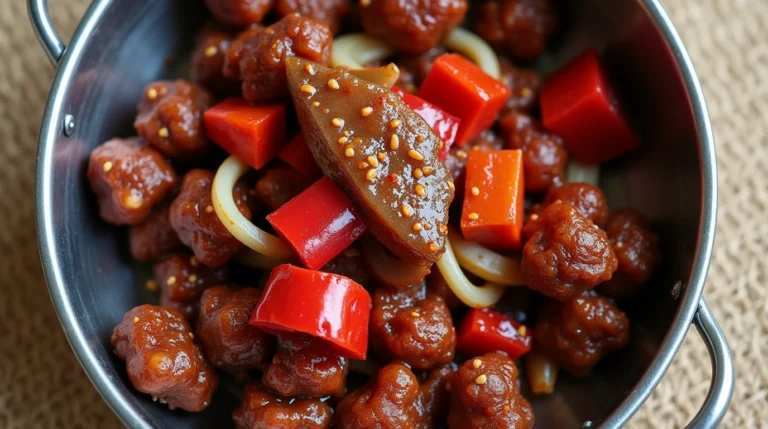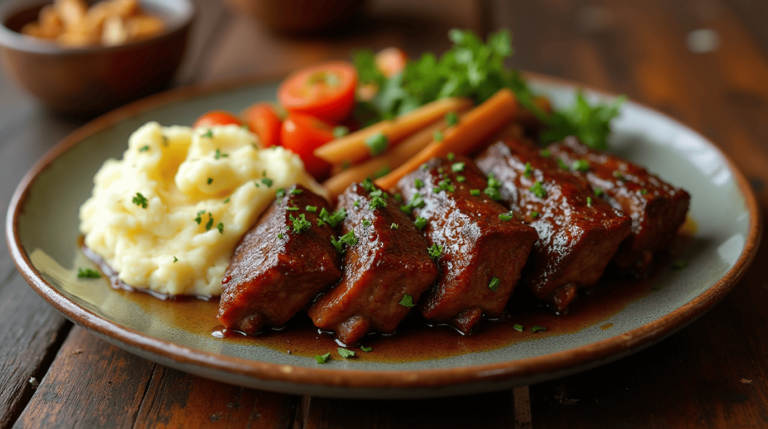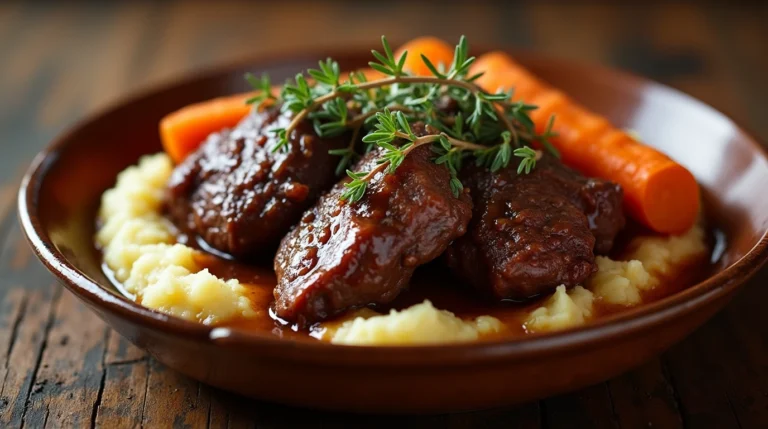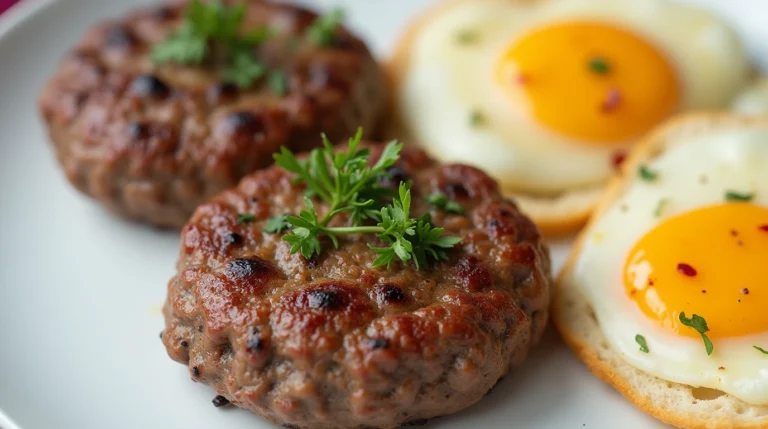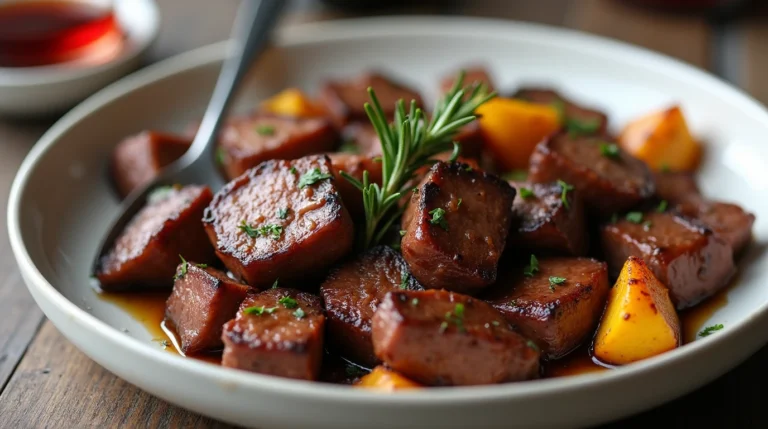Beef Ribs Recipe Grill: A Step-by-Step Guide to Perfection

Beef Ribs Recipe Grill is one of the most rewarding experiences for any BBQ lover. The combination of smoky flavors, tender meat, and the joy of cooking outdoors make it a special treat. If you’re new to grilling or want to take your skills to the next level, this comprehensive guide will help you master the art of grilling beef ribs, from choosing the right cut to serving up your masterpiece.
Table of Contents
Why Beef Ribs Recipe Grill Are Perfect for Grilling

When it comes to BBQ, beef ribs stand out. They are packed with flavor, and their combination of tender meat and rich marbling makes them an ideal candidate for grilling. Beef ribs are large, juicy, and offer a satisfying texture that’s hard to beat. The grill’s heat helps to develop a deliciously smoky exterior while keeping the meat tender and juicy on the inside.
The Appeal of Beef Ribs Recipe Grill
What makes beef ribs so appealing? For one, they’re versatile. Whether you prefer them with a classic BBQ sauce, a spicy rub, or simply seasoned with salt and pepper, you can customize the flavor profile to match your preferences. Additionally, their size makes them perfect for sharing, making them the ideal choice for family gatherings or summer cookouts.
Grilling vs. Other Cooking Methods
Grilling beef ribs provides a smoky, charred finish that other cooking methods can’t replicate. While slow-cooking or oven-roasting is often used for tender meat, grilling adds a depth of flavor through the caramelization of the fats and the high heat from the grill. This creates a perfect balance of crispy edges and juicy, flavorful meat in the center, resulting in the ultimate BBQ experience.
How to Choose the Best Beef Ribs for Grilling
Selecting the right beef ribs is essential for grilling success. Not all cuts are created equal, so it’s important to choose one that fits your grilling needs. Here are the key factors to consider when shopping for beef ribs:
Bone-In vs. Boneless Beef Ribs: What’s the Difference?
When deciding between bone-in and boneless beef ribs, it’s important to understand the pros and cons of each. Bone-in ribs generally offer more flavor and moisture since the bone helps retain heat and keeps the meat juicy. The bones also give you a more dramatic presentation on the plate, perfect for impressing guests.
Boneless ribs, on the other hand, are easier to eat and typically cook faster. While they may lack some of the depth of flavor that comes from bone-in ribs, they’re still a great option if you’re looking for convenience or a quicker cook time.
Best Cuts for Grilling: Flanken-Style, Short Ribs, and More
- Flanken-Style Ribs: These ribs are cut across the bone, which gives them a unique, irregular shape. They cook quickly and are often favored for grilling due to their high meat-to-fat ratio. The meat is tender, and they’re perfect for creating a juicy, flavorful bite.
- Short Ribs: These are cut from the lower rib area, known for their rich marbling. When grilled, short ribs become incredibly tender and juicy, offering a deep, beefy flavor. They’re perfect for slow grilling and make an excellent addition to your BBQ menu.
- Back Ribs: These come from the upper part of the cow and are typically leaner than short ribs. While they might not be as fatty, they’re still incredibly tender and perfect for grilling when cooked properly.
How to Identify Quality Beef Ribs Recipe Grill

When shopping for beef ribs, look for fresh, bright red meat. High-quality ribs should have a good amount of marbling—fat that runs through the meat, helping to keep it moist and flavorful during cooking. Avoid any ribs with discolored spots or dry patches, as these could indicate that the meat is past its prime. Fresh beef ribs should have a pleasant, meaty aroma.
Essential Tools You’ll Need for Grilling Beef Ribs
Before you fire up the grill, make sure you have the right tools. Having the right equipment not only makes the grilling process easier but also ensures that your beef ribs come out perfectly cooked every time.
Must-Have Grilling Tools
- Grill: Whether you prefer a charcoal or gas grill, make sure it’s large enough to accommodate your beef ribs without overcrowding. A larger grill ensures better airflow and more even cooking.
- Tongs: A reliable pair of tongs will allow you to easily flip and move your ribs on the grill. Avoid using a fork, as puncturing the meat will cause juices to escape.
- Meat Thermometer: A meat thermometer is an essential tool for checking the internal temperature of your ribs. This ensures they’re cooked to perfection without overcooking.
- Basting Brush: If you’re applying a marinade or BBQ sauce, a basting brush will help evenly coat your ribs and prevent mess.
Charcoal vs. Gas Grills: Which One Should You Use?
Both charcoal and gas grills have their benefits. Charcoal grills provide that classic smoky flavor, which is ideal for beef ribs. However, they can take a bit longer to heat up and require more attention.
Gas grills are more convenient and heat up quickly, offering a more controlled cooking environment. While they may not impart as much smoke flavor, they’re still a great option for grilling beef ribs, especially if you’re short on time.
Preparing Your Beef Ribs Recipe Grill: Tips and Techniques
Once you’ve selected your beef ribs, the next step is preparation. Properly preparing your ribs before grilling can make all the difference in flavor and tenderness.
Trimming Beef Ribs for the Perfect Cook
Before grilling, it’s important to trim away any excess fat from your ribs. While a little fat adds flavor, too much can result in flare-ups or greasy meat. Use a sharp knife to carefully trim the fat, leaving a thin layer for moisture and flavor.
You should also remove the silverskin from the back of the ribs. This tough membrane can prevent seasonings from penetrating the meat, so using a paper towel to grip and remove it will ensure a better texture.
Marinating vs. Dry Rubs: Which Is Best?
There are two main ways to flavor your Beef Ribs Recipe Grill: marinating or applying a dry rub.
- Marinades: Marinating your beef ribs allows the flavors to soak deep into the meat. For a simple marinade, mix olive oil, soy sauce, garlic, and herbs. Let your ribs marinate for at least 4 hours or overnight for a more intense flavor.
- Dry Rubs: A dry rub is a mixture of spices applied directly to the surface of the meat. You can create a simple rub with salt, pepper, garlic powder, and paprika, or experiment with chili powder, brown sugar, and cumin for a bolder taste.
How Long Should You Marinate Your Beef Ribs Recipe Grill ?
If you choose to marinate your ribs, aim for at least 4 hours of marinating time. However, for the best results, let your ribs sit in the marinade overnight to ensure they absorb all the flavors. If you’re using a dry rub, apply it just before placing the ribs on the grill for a flavorful crust.
Grilling Your Beef Ribs: The Step-by-Step Process
Now that your beef ribs are prepped, it’s time to grill them. The grilling process can take some time, but the result will be well worth the wait.
Setting Up Your Grill for Beef Ribs
For indirect grilling, set up your grill with a two-zone fire. This means placing the charcoal or gas burner on one side of the grill and leaving the other side empty for indirect heat. This setup allows the ribs to cook slowly and evenly without direct exposure to high flames, which could cause them to burn.
The Ideal Grilling Temperature
For beef ribs, you’ll want to maintain a grill temperature of around 350°F. This ensures that your ribs cook evenly while developing that perfect crispy outer layer. If you’re using a charcoal grill, keep an eye on the temperature by adjusting the vents, and if you’re using gas, set the burners to medium-high heat.
Cooking Time and Technique
Place your ribs on the cooler side of the grill, bone side down, and close the lid. Let the ribs cook for about 2.5 to 3 hours, checking occasionally to make sure the temperature remains steady. Flip the ribs halfway through the cooking time to ensure even cooking.
During the last 20 minutes of grilling, you can apply your BBQ sauce using a basting brush, allowing it to caramelize and add an extra layer of flavor.
Using a Meat Thermometer
To check for doneness, insert a meat thermometer into the thickest part of the ribs. The ideal internal temperature for tender beef ribs is around 190°F to 203°F. This high temperature breaks down the collagen in the meat, making it tender and juicy.
Serving Your Beef Ribs: Tips for the Perfect Plate
Once your beef ribs are cooked to perfection, it’s time to slice and serve them.
Resting Your Ribs
Allow your ribs to rest for 10-15 minutes before slicing. This helps the juices redistribute within the meat, ensuring each bite is moist and flavorful.
Slicing the Ribs
Use a sharp knife to slice between the bones of the ribs. This allows for clean cuts and makes serving easier. Be sure to slice against the grain for the best texture.
Pairing Sides and Sauces
To complete your BBQ feast, serve your beef ribs with traditional sides like coleslaw, baked beans, or cornbread. A side of pickles or grilled vegetables can also add a refreshing contrast to the rich flavors of the ribs. Don’t forget to offer a variety of sauces, from tangy BBQ to spicy mustard-based options.
Conclusion: Master the
Grill for Perfect Beef Ribs Recipe Grill
Grilling beef ribs can seem daunting at first, but with the right tools, preparation, and technique, you’ll be able to create mouthwatering ribs that will impress your guests every time. Whether you’re cooking for a small family dinner or hosting a large BBQ gathering, these tips will ensure that your beef ribs come out tender, juicy, and packed with flavor.
Now that you know how to choose, prep, and grill beef ribs like a pro, it’s time to fire up your grill and enjoy some of the best BBQ you’ve ever tasted. Happy grilling!

